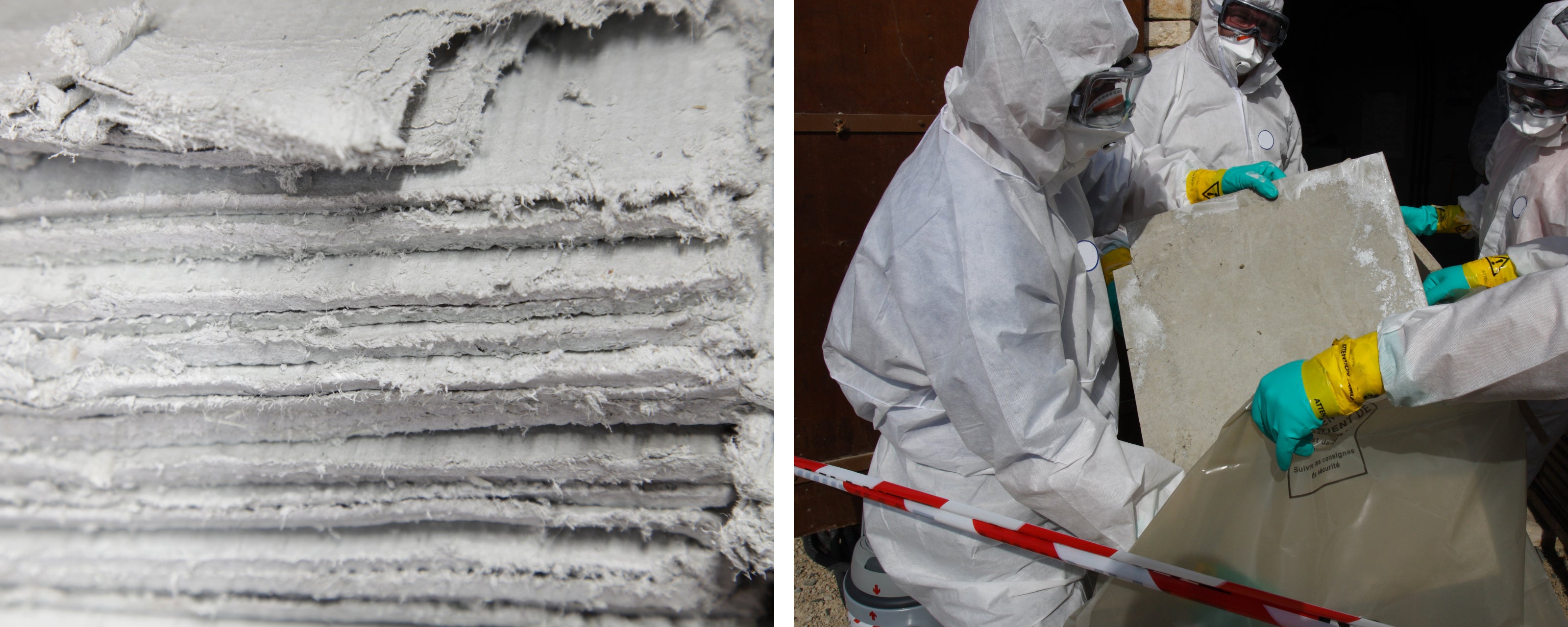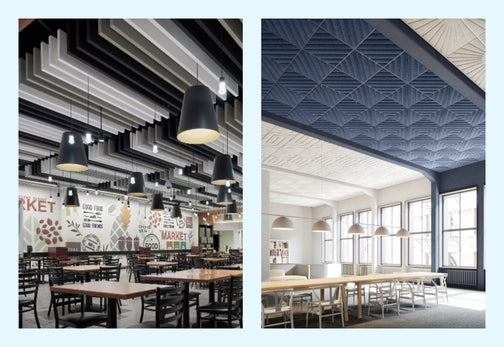Identifying asbestos ceiling tiles

Before getting into the details about asbestos, it is important to point out that Armstrong ceiling tiles have never contained asbestos.
What is asbestos?
Asbestos is a mineral fiber that occurs in rock and soil. According to the Occupational Safety and Health Administration (OSHA), asbestos is defined as the following:
“Asbestos is the name given to a group of naturally occurring minerals resistant to heat and corrosion. Asbestos includes the mineral fibers chrysotile, amosite, crocidolite, tremolite, anthophyllite, actinolite, and any of these materials that have been chemically treated or altered. Heavy exposures tend to occur in the construction industry and in ship repair, particularly during the removal of asbestos materials due to renovation, repairs, or demolition.” - OSHA
Asbestos: 4 common myths
Nearly everyone has heard about the dangers of asbestos exposure, here are 4 of the most common myths explained:
Myth #1: You can safely remove asbestos on your own.
It's a myth that removing asbestos is safe if you wear a dust mask. Asbestos is most dangerous during removal if disturbed or damaged, which offers a significant risk and could even be fatal. A dust mask is not proper protection, only qualified specialists should remove asbestos because of the hazard involved.
Myth #2: All asbestos products look the same.
It is often assumed that all asbestos looks like fluffy insulation, so it can be identified by looking at it. However, asbestos was so widely used that it could be present in any building material. Because there is the potential to find asbestos anywhere, samples need to be taken and thoroughly tested in a lab.
Myth #3: White asbestos is not dangerous.
Amosite (brown asbestos) and Crocidolite (blue asbestos) are considered the most hazardous forms of asbestos. Chrysotile (white asbestos) can still cause health issues and should be treated just as seriously.
Myth #4: Since asbestos was banned there's no need to worry about it anymore.
In 1989 a Partial Ban on the manufacture, import, processing, and distribution of some asbestos-containing products started. A rule put in place in April 2019 does not provide a way for the use of asbestos to return to the marketplace. In March 2024, the EPA finalized the risk management rule for chrysotile asbestos. Learn more about the final rule.
What does asbestos ceiling tile look like?
It is often difficult to identify asbestos ceiling tiles simply by looking at them. To know for sure if your tiles contain asbestos, it is best to contact a professional asbestos removal company to have them tested.
However, here are a few signs you can look for to help you determine if testing is necessary.
Visual: Generally light in color with mild texturing, a powdery appearance, and small pinhole markings. They are square or rectangular in shape, and come in 2x2’ or 2x4’ sizes.
Location: In commercial buildings, asbestos-containing ceiling tiles were commonly used, so it's important to check everywhere. In homes, they were used in drop ceilings in kitchens and basements to cover ductwork.
Age: Look for a manufacture date on the tiles or on leftover tile packaging. If the tile was manufactured between 1920-1978, it could contain asbestos.
What are Armstrong ceiling products made of?
Armstrong’s signature product, mineral fiber ceiling tiles, are made up of:
• 40%-50% of fibers: used for acoustics
• 20%-30% perlite: used for fillers
• 1%-10% of starch: used for binding
• 5%-10% of recycled ceiling panels: used for fillers
• 1%-10% of recycled paper: user for fillers
If you are unsure what type of ceiling tile you have, we cannot guarantee that it is free from asbestos. The only thing that we can guarantee is that if your ceiling tile is an Armstrong ceiling, it does not have asbestos. Armstrong ceiling tiles have never contained asbestos.
Asbestos FAQs
How do I know if my ceiling tile has asbestos?
Some quick ways to identify:
• Color & Texture – Light, Textured, Or Soft Tiles
• Size – 2×2′ Or 2×4′ Acoustic, Drop & Suspended Tiles
• Date Of Manufacture – Mid 1980’s Or Earlier
• Manufactured By A Company That Used Asbestos
• Date Of Building Construction – Especially Pre-1980’s
We recommend you always contact a professional if there are any doubts.
How long does asbestos stay in the air?
Asbestos fibers may take 48 to 72 hours to settle in a setting with few disturbances. The dust is so light that if it is disturbed, it can readily become airborne once more.
Should I worry about asbestos tiles?
You should never try to conceal or remove asbestos tiles on your own. Materials containing asbestos should only be handled by trained professionals.
Find your solution with Kanopi by Armstrong
Connect with our team of experts to find out what is right for your business or home.



 Thanks for subscribing!
Thanks for subscribing!

